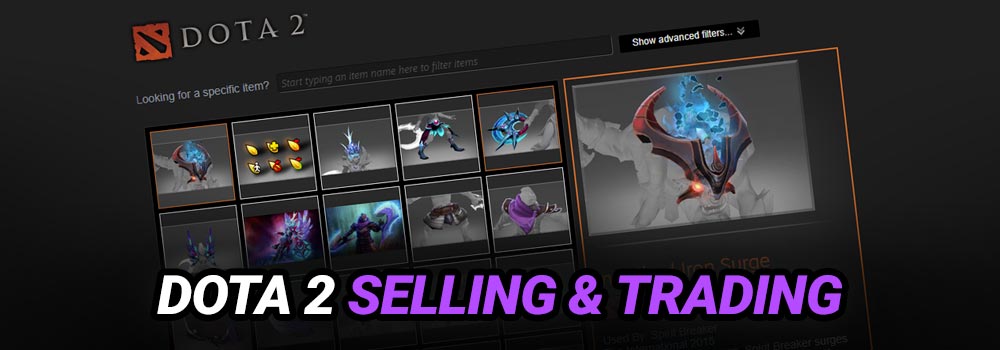CGKY News Hub
Your go-to source for the latest insights and trends.
From Pixels to Profit: The Dota 2 Skin Economy
Unlock the secrets of the Dota 2 skin economy and learn how to turn your pixels into profit! Dive in now for tips and strategies!
Understanding the Dota 2 Skin Economy: A Comprehensive Guide
The Dota 2 skin economy has become a significant aspect of the game, shaping player interactions and influencing gameplay experiences. Understanding this economy is crucial for both new and veteran players who want to enhance their in-game aesthetic while potentially profiting from their investments. In essence, the skin economy revolves around the buying, selling, and trading of skins, which are cosmetic items that alter the appearance of heroes and weapons. These skins are primarily acquired through in-game drops, purchases, and the Steam Community Market, where players can set their own prices, often leading to fluctuations based on demand and rarity.
One of the central components of the Dota 2 skin economy is the concept of rarity. Skins are categorized into tiers, ranging from common to immortal, with each tier reflecting a skin's scarcity and desirability. Additionally, the introduction of seasonal events, such as the Battle Pass, often brings exclusive skins that can significantly impact their market value. As players invest time and money into collecting these cosmetics, understanding trends and market dynamics becomes essential. By doing so, enthusiasts can make informed decisions, whether they aim to collect the most coveted items or seek to profit from their digital assets.

How to Maximize Your Gains in the Dota 2 Skin Market
In the competitive world of online gaming, Dota 2 has carved out a significant niche, particularly in the realm of digital collectible skins. To maximize your gains in the Dota 2 skin market, it's essential to stay informed about market trends and fluctuations. Start by regularly checking pricing on reputable trading platforms and forums. Create a list of your favorite skins, noting their values and any patterns in their price changes. Keeping a close eye on community events, such as major tournaments or seasonal updates, can also provide insight into skins that are likely to rise in value.
Another key strategy is to engage with the community. Join Dota 2 forums and social media groups to connect with other traders, and consider sharing your experiences and insights. Participating in discussions can help you discover deals and trading opportunities that might not be readily apparent. Additionally, consider the rarity and condition of each skin when trading; rare and well-maintained items typically yield higher returns. By applying these tactics and staying proactive, you'll be well on your way to successfully navigating the Dota 2 skin market.
What Factors Influence the Value of Dota 2 Skins?
The value of Dota 2 skins is influenced by a variety of factors that players and collectors should consider. One of the most significant determinants is rarity; skins that are difficult to obtain or are limited editions tend to command higher prices in the marketplace. This concept often ties into the demand among players, as popular heroes and visually appealing designs can drive interest and increase the skin's perceived value. Additionally, the condition of a skin, which can range from well-worn to factory-new, also plays a crucial role in its valuation.
Market fluctuations, influenced by trends and the entry of new players, can further affect skin values. As new patches are released, certain heroes may rise in popularity, making their associated skins more desirable. Moreover, skins that feature special effects or unique animations often retain or increase their value more effectively than simpler designs. Lastly, community events or tournaments can lead to temporary spikes in skin value, as players rush to acquire items linked to the latest happenings in the Dota 2 ecosystem.